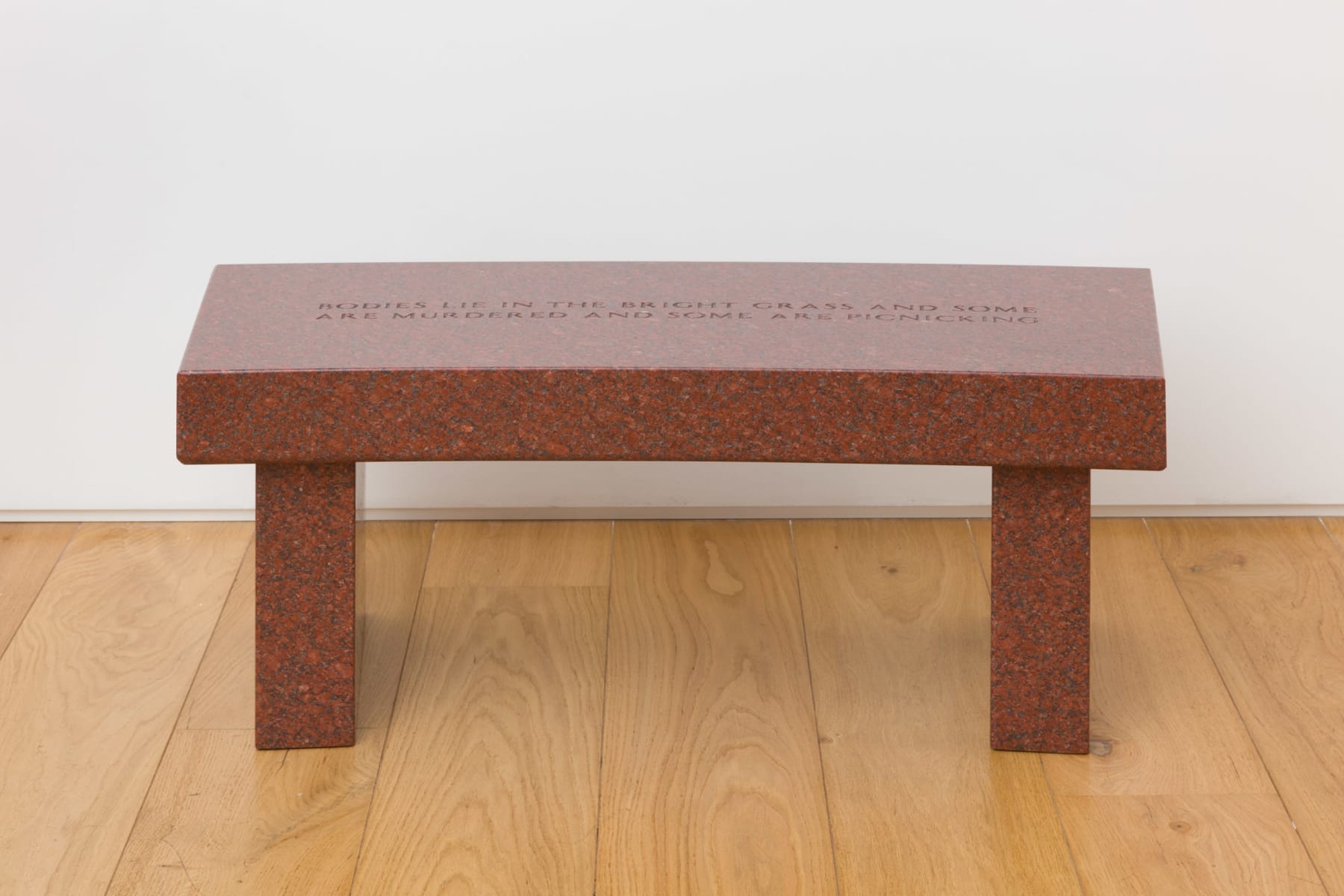Jenny Holzer
Survival: Bodies lie in the bright grass..., 1989
Indian red granite bench
Ed. 1/2 + 1AP
Ed. 1/2 + 1AP
43.2 x 106.7 x 45.7 cm
17 x 42 x 18 in.
17 x 42 x 18 in.
Further images
Jenny Holzer’s Survival: Bodies lie in the bright grass... (1989), is one of a series of the benches inspired by Holzer’s Survival series (1983-85). In these Survival texts, Holzer writes...
Jenny Holzer’s Survival: Bodies lie in the bright grass... (1989), is one of a series of the benches inspired by Holzer’s Survival series (1983-85). In these Survival texts, Holzer writes brief but urgent messages regarding both political and social issues. Holzer’s art often takes many forms, from stone benches, projections, signs, posters, paintings, plaques and textiles, with text being central to her practice. Holzer began working on marble and granite benches in 1987, using the format to compel viewers to contemplate and closely interact with the inscriptions.
In this specific work, the text juxtaposes violence with leisure, amplifying the tension between the serenity suggested by a bench and the darker implications of its message. Through her series of benches and footstools, Holzer transforms functional furniture into a platform for activism, with the granite bench serving both as a symbol of permanence, evoking monuments or graves, and as a channel for social critique. In a gallery or museum setting, the bench is reminiscent of those which highlight the gift of a donor; however, in place of an honorary name, it bears a thought-provoking inscription that confronts viewers with an invitation for reflection rather than commemoration.
In this specific work, the text juxtaposes violence with leisure, amplifying the tension between the serenity suggested by a bench and the darker implications of its message. Through her series of benches and footstools, Holzer transforms functional furniture into a platform for activism, with the granite bench serving both as a symbol of permanence, evoking monuments or graves, and as a channel for social critique. In a gallery or museum setting, the bench is reminiscent of those which highlight the gift of a donor; however, in place of an honorary name, it bears a thought-provoking inscription that confronts viewers with an invitation for reflection rather than commemoration.
LAMB
Copyright The Artist







